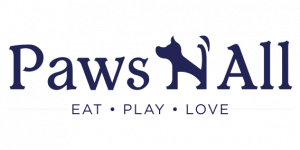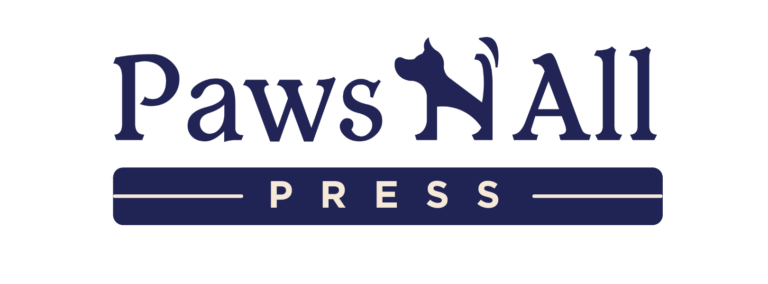A quick brush of your dog’s teeth daily will leave them with sparkly whites (and fresher breath!). But teeth cleaning also helps to prevent a variety of dental issues from developing. That will reduce the risk of painful infections, periodontal disease and expensive vet bills down the road.
Why is it important?
According to Puppy Leaks, gum disease occurs in five times more dogs than in people. So it’s imperative that your dog has adequate dental care throughout his or her lifetime.
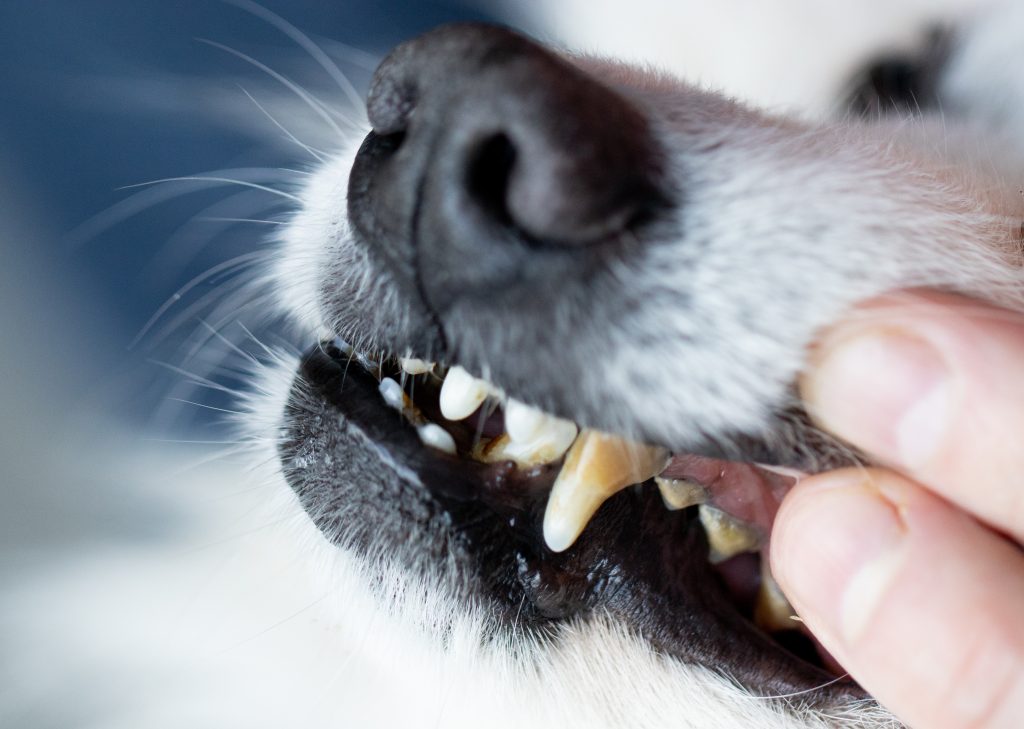
However, many dog parents don’t realise the importance of home care in addition to regular professional dental check-ups. And so they overlook oral health in dogs. Like humans, dogs’ teeth need regular cleaning to:
- Prevent the build up of calculus, plaque and tartar
- Reduce the risk of gingivitis and gum disease
If their oral hygiene is not taken care of, bacteria and food particles can build up and collect along the tops of their teeth and into their gums. This is how plaque forms. Plaque can turn into tartar and form permanent damage if not removed in time.
It may not be the easiest task initially, but if you keep at it, your dog will adjust to the quick and painless routine (and in some cases enjoy the extra attention!).
Choosing a toothbrush to brush your dog’s teeth
Introducing your dog to a toothbrush at first can be a challenging experience, so you need to persevere and keep a gentle approach.
Dog toothbrushes can be purchased online or at most pet goods stores. There are also a variety of sizes available: from kids’ sized brushes and toothbrushes with multi-angle bristles, to mini brushes that fit over your finger (like a thimble).
Choose a brush that is the best fit for your dog’s breed and size, as this will ensure your cleaning efforts do the best job.
Choosing a dog toothpaste
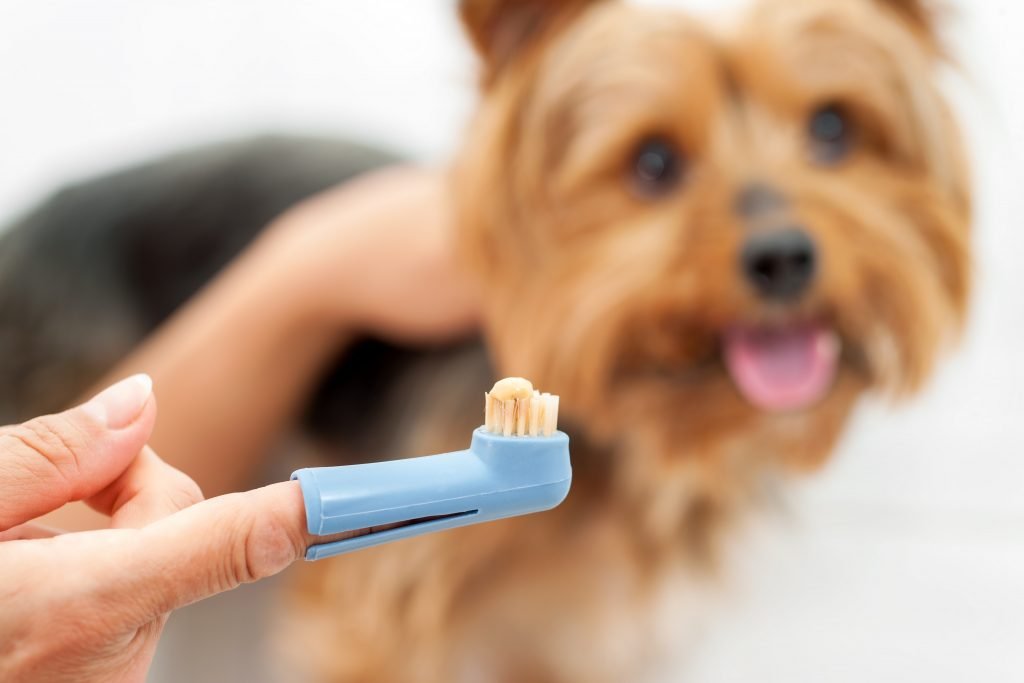
There are a variety of toothpastes on the market with some tasting just like meat, peanut butter or liver… all flavours that your dog will love!
However, you should NEVER use human toothpaste to brush your dog’s teeth: it is not suitable for them and can actually lead to other health issues.
We suggest you talk to your vet about the most appropriate brush and toothpaste for your dog’s individual needs.
How to get your dog used to a toothbrush
- So that covers the tools you need to brush your dog’s teeth. Now comes the process of actually doing it.:
- Be calm and gentle so your dog is not afraid of this new routine.
- Practice holding your dog’s mouth and snout before you start using a toothbrush. They need to feel comfortable with your hands in their mouth and near their face.
- Try doing circular motions with your hand around their mouth, so they can learn the motion and trust the exercise is safe. This is particularly important for older dogs.
- Give your dog a taste test! Let them sample and smell a small amount of toothpaste from your finger, as if it were a treat.
- Show your dog the toothbrush – let them sniff it and lick it before you begin your brushing routine. Encourage them not to bite down on it: their toothbrush is not a chew toy!
- Gently hold the brush up to your dog’s gums and gradually get them used to the feeling of the bristles.
Tips for how to brush your dog’s teeth
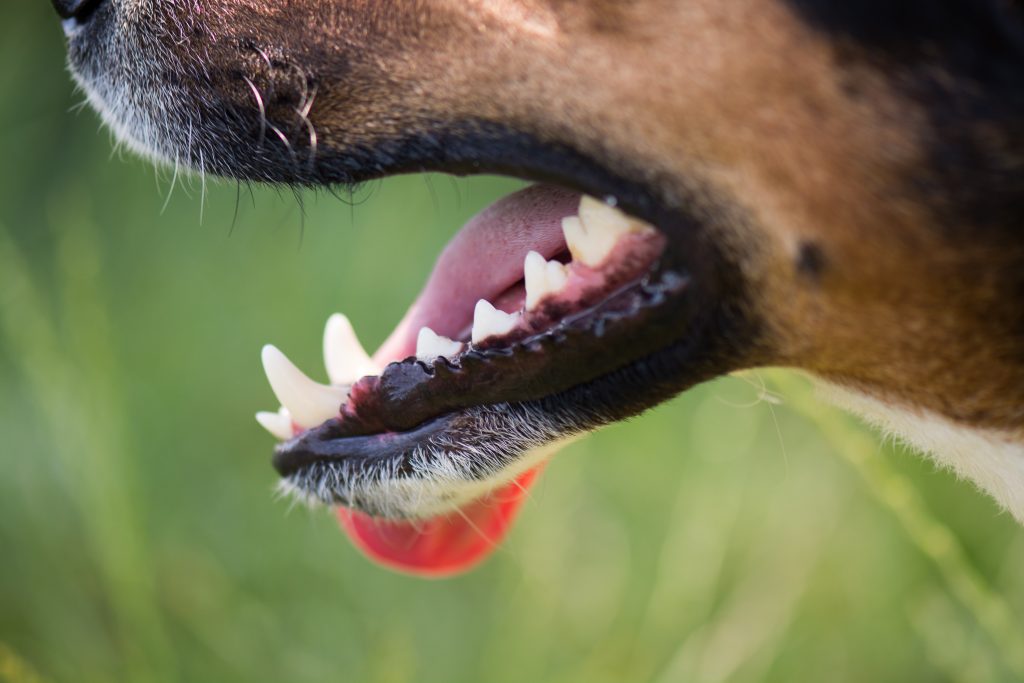
- Once your dog is comfortable with all of the above, then you can start gently testing with the brush and toothpaste on your dog’s teeth:
- Hold the toothbrush in a 45 degree angle
- Work in small circular motions on the surface of your dogs teeth
- Start in small areas of the mouth and over time work your way up to eventually covering all areas of his mouth
- Stop and try again later if your dog is stressed, in pain or not tolerating the movement
- Lift up the dogs lips to access the gum line and back teeth
- Brush downward in hard to reach areas.
- Let your dog lick the brush at the end of the clean – this helps clean his tongue and freshen his breath. And, can becomes a really fun treat for them licking off any left over toothpaste.
Do your best and to be sure that you have all hard to reach areas covered.
Regular vet visits will also ensure that any orthodontic or developmental problems are found and addressed before they become serious.
Whilst daily brushing cannot guarantee your dog will never have dental issues, it certainly helps offer the best shot at clean and healthy teeth!
Related articles:
7 warning signs of unhealthy dog
Sources:
WebMD https://pets.webmd.com/dogs/features/brushing-dogs-teeth-beneficial









